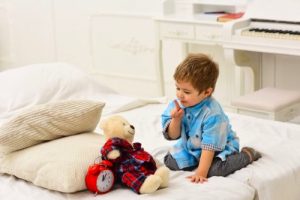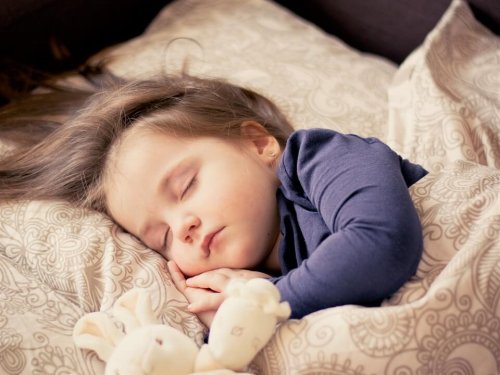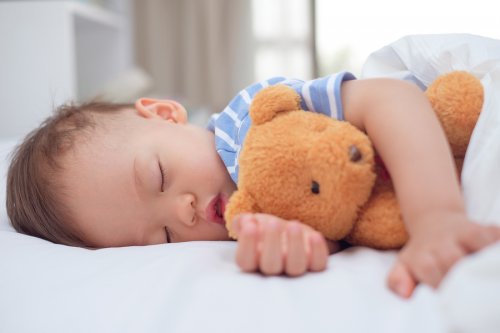Stuffed Animals: When Babies Become Too Attached

It’s quite common to see children between six months and five years of age become attached to certain objects. These can range from a blanket or a small pillow to a toy. For this reason, many parents become concerned when their children becoming inseparable from their stuffed animals.
This phenomenon stems from the fact that little ones need to feel protected. When in contact with a certain object, they may associate it with the love and companionship they get from their parents.
If you’re experiencing this situation with your child, this article may be helpful. We’ll take a look at attachment to stuffed animals and offer some suggestions.
What are comfort toys?
Comfort toys are recreational objects for children that are usually soft to the touch and possess harmonious colors and features. In addition, they can range from the form of a baby doll to non-threatening animals with big eyes, like bears.
This type of toy is usually a source of contentment for small children. They can help them fall asleep and not feel afraid at night, lending a sense of security.
Moreover, it’s estimated that comfort toys like rag dolls and teddy bears can bring out feelings of love and protection in children, helping them to develop a sense of belonging.
Stuffed animals and attachment
While a child may develop an early fondness for an object like a pillow or a blanket, cases where the child manifests a desire to be in constant contact with an object tend to occur with comfort toys.
This is because parents usually place these stuffed animals and dolls in the child’s crib or bed. There, the child not only makes eye contact with the toy, but spends a lot of time with it, lending a sense of safety at bedtime.

Apart from visual familiarity, another important factor in a child being inseparable from a beloved toy is touch. In fact, it may be even more vital.
Many times, a child can show affection for an old stuffed animal. Even if it’s missing an eye or falling apart, its softness will still appeal to the child.
Pros and cons of letting children have stuffed animals
Although some parents may find it excessive to let their child spend too much time with stuffed animals, the truth is that an emotional bond with a toy offers its own advantages. These include comfort, security, and a pleasant feeling upon contact. Some others include:
Expressing and channeling emotions
Children also use their stuffed animals as a way of expressing their emotions. These can range from their desire to love, hold, or protect their beloved teddy bear to dealing with situations they find troubling or painful.
It makes sense, then, that when a parent scolds a child for bad behavior, he’ll play with his beloved bear, repeating the parent’s words to it.
This way, young children learn to assimilate negative experiences by recreating them from another point of view. This activity also helps them to understand their own behavior.

“Teddy bears can awaken feelings of love and protection in a child, helping him or her develop a sense of deep-rooted belonging.”
Bond versus dependance
There are some very good reasons that children’s affective bonds with their stuffed animal can be seen as comforting and good for their emotional development.
However, it should be noted that if a child of five or older is completely dependant on his or her stuffed animal to the point of not wanting to do anything without it, we recommend seeking out a psychologist’s expertise.
These comfort toys should act as transition points in the handling of emotions and feelings. Nevertheless, the child should be able to deal with the attachment in a healthy way.
Finally, remember that the hygiene of your child’s toys is also very important, especially those made of fabric. Therefore, you should clean them regularly to avoid allergic reactions.
All cited sources were thoroughly reviewed by our team to ensure their quality, reliability, currency, and validity. The bibliography of this article was considered reliable and of academic or scientific accuracy.
- Murillo, M. (1996). La metodología lúdico creativa: una alternativa de educación no formal. In Congreso de Cartagena de Indias.
- Reina, M. del C. M., & Cea, M. V. (2009). Actitud en niños y adultos sobre los estereotipos de género en juguetes infantiles. CIENCIA Ergo-Sum.
- Damián Díaz, M. (2007). LA IMPORTANCIA DEL JUEGO EN EL DESARROLLO PSICOLÓGICO INFANTIL. Psicología Educativa.
This text is provided for informational purposes only and does not replace consultation with a professional. If in doubt, consult your specialist.
